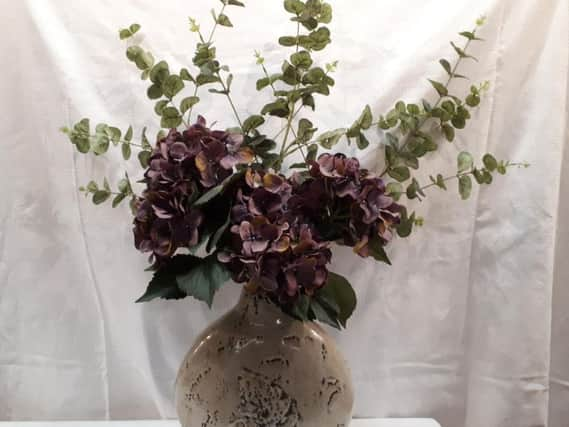An expression of love made with flowers...


It's Valentine’s Day, a tradition couples have been following for centuries, since ancient Rome, where 13, 14 and 15 February were celebrated as Lupercalia, a pagan fertility festival.
St Valentine was supposedly a Roman priest imprisoned for performing marriage ceremonies at a time they had been outlawed. Valentine fell in love with his gaoler’s daughter and sent letters to his sweetheart signed “From Your Valentine”, an expression we still use.
Advertisement
Hide AdAdvertisement
Hide AdAccording to Pepys’s diary, 17th century Valentines included rings, embroidered gloves, shoestrings, stockings and garters. Thankfully, the Victorian Valentine card replaced these pricy gifts.
The Victorians adored giving, displaying and treasuring flowers. You might not think of flowers as antiques, but carefully pressed and preserved wedding bouquets, beautifully framed, are highly sought. Leading studios manufactured vases specifically designed for fresh or dried arrangements, in classic styles we reproduce to this day.
Hugely popular was “floriography”, where each flower had a secret meaning. In a time of strict etiquette that prohibited conversations and definitely flirtations, flowers were used to send hidden messages.
Though often assumed to indicate positive desires of affection and love, flowers could also send a negative message. Confusingly, the same flower could have opposite meanings, depending on how it was arranged or delivered.
Advertisement
Hide AdAdvertisement
Hide AdValentine’s admirers often sent their beloved bouquets, with every bloom carefully chosen. Their hidden message could be decoded using one of the many books published on the subject, thoroughly charming if you can find a copy today. Pink camellias said “longing for you”, and white hyacinths “loveliness”, but yellow hyacinths declared “jealousy”. If the sender received a bouquet of withered flowers in return, he'd been rejected.
Pink roses symbolized grace and appreciation, and white roses innocence. Red roses became the suitors’ choice, as their vibrant red was seen as a symbol of passion and deep, lasting love.
So in these hi-tech days, it’s lovely to think we’re still following traditions that are a little more romantic than texting a heart emoji. Happy Valentine’s Day.